How to SEO Shopify Collection Pages?
Shopify Collection allows online sellers to arrange their products more attractively and easy to compare for their customers. Especially, fo the multiple products with hundreds of products, setting a collection will minimalize the effort on product management.
Because the majority of this online shopping revenue comes from their ranking on big giant Google, SEO is more and more important in online business. Especially in the competitive market as Shopify, your stores need to stand out in the search engine to be found easily.
As the most popular eCommerce platform, Shopify will be the lucrative marketplace for any online sellers. One of the methods that easily boost sales as well as natural traffic by SEO. SEO is vital for any Shopify store owners. By optimizing the Shopify’s Collection, it is easy for shoppers can approach more to their products.
The Shopify store owners can discover about maximizing their collection’s appearance by reading this article How to SEO Collection pages on Shopify?.
To know more about the definition what is a Shopify Collection? and how to customize the Shopify collections, let’s continue to read it.
Exclusive Offer: Get Shopify 33 days for just $1 + The Online Store Starter Kit
Start your 3-day free trial, and enjoy your first month of Shopify for $1 plus the premium package designed especially for new Shopify merchants!
What is a Shopify Collection?
Shopify Collection is the tool that allows Shopify store owners can group products together into categories. Collection pages is so effective for any online merchants to keep their products organized and user-friendly. Therefore, the customers are easy to find any items and in the same group. So that it is easier for users to find related products and navigate through your site.
Therefore, when their business size increases, the number of collections in online shops is more. It is necessary for them to optimize the Shopify Collection to make their shops gain higher rankings on Google.

How do Collections work in Shopify
Shopify Collection which plays an important role in how the Shopify stores work keeps their products beautiful and arrangeable. The collections show on the site as a webpage with the featuring images for each product. The products can be added easily in the same collection with the internal link structure. If you are running a store with various products, collections usually make up the bulk of the links in your main navigation.
From the user’s point of view, a collection displays on your site as a webpage featuring images of the products which belong to that collection.
If you set up your theme and plugins to allow it, users can filter and sort products in that category. They can also select a product that they are interested in by clicking on its picture. They will be taken to the product page. In Shopify, some themes allow the store owners to filter and sort products into different categories. It is possible for them to choose a product which they want to buy within a minute.
How to optimize your Shopify collection for SEO?
If these collections are customized properly with SEO criteria, they will help the Shopify sellers to increase the recognization of their stores and their sales. This method helps their shops easier for Google and other search engines to understand by adding the queries your products are relevant for.
It is not recommended that the Shopify store owners include a product in more than a collection. Because it can have technical difficulties such as duplicate content and confuse the search engines. Therefore, the store owners can break up their collections to sub-collections which are in the site’s link architecture are also more specific for both users and Google search engines.

Free 1:1 Shopify consultation & 30-day all-app trial FREE
- Shopify Plus Strategy and Consultation
- Personalized E-commerce Solutions
- Conversion Rate Boosting Techniques
- Inventory Management Hacks
Create a collection based on searches
First of all, as an Ecommerce marketer, the Shopify store owners should consider Segmenting Search Intent which helps them to focus on the intent of searchers or the transactional searches. It is essential for online merchants to understand consumer needs, which helps them to optimize search intent.
The basic SEO will be the best choices for any eCommerce sites to avoid these things on their sites:
- Duplicate URLs
- Duplicate information of vendors which also appear the same on other sites
- Duplicate sent information to affiliates or CSEs
- Give few backlinks
- Build a not flat structure pages
- Review not crawlable for platforms
- Set up default and formulaic meta titles
Other factors such as collection’s distance from the navigation, more crawling, outbound links or more relevant keywords can influence Google preferences too. In addition, SERP pogosticking is also believed as a negative factor; therefore, this situation should be minimalized on a collection page.
Create a collection
Title
The Title will be a determinant for the page’s headline. It also appears in the set the title tags, which results in search results. Therefore, collection title should be expressed by the most understandable keywords because it is a tool to communicate with the customers about what kinds of products they have. That is the reason why collection names need to be specific and clear for any visitors.
To increase the efficiency of SEO, collection title plays an important role so that it is also essential for us to choose the suitable keywords to approach to target consumers. What they concern about or the keywords they are searching for is the things that Shopify store owners should extend.
The first step to start creating a collection is log in the Shopify admin dashboard. Click to Product, the menu will drop down with multiple options. Then, choose to Collection on the left menu.
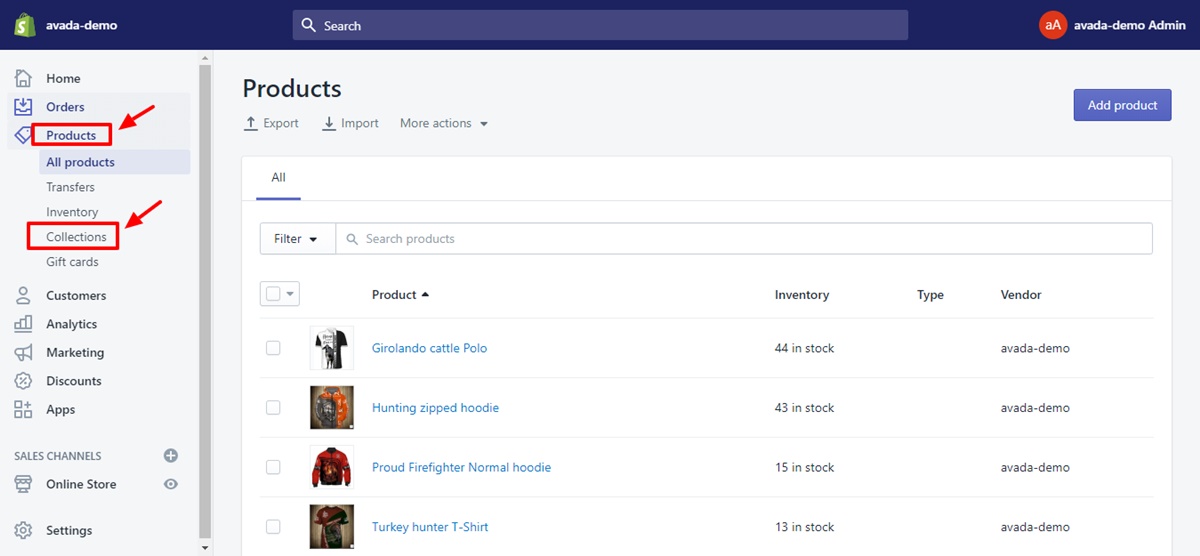
After coming to the Collection section, there is a button on the top right of this Shopify shop that the online sellers can click to Create collection
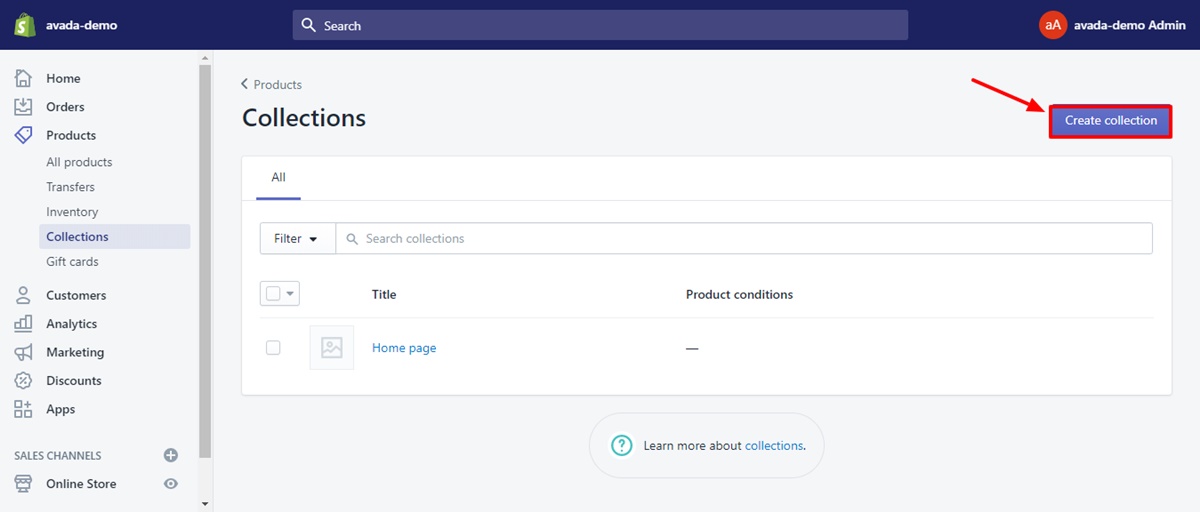
There is a box to fulfill the Title on the Create collection page. The example that online merchants can set up a name like Summer collection, Under $100, Staff picks
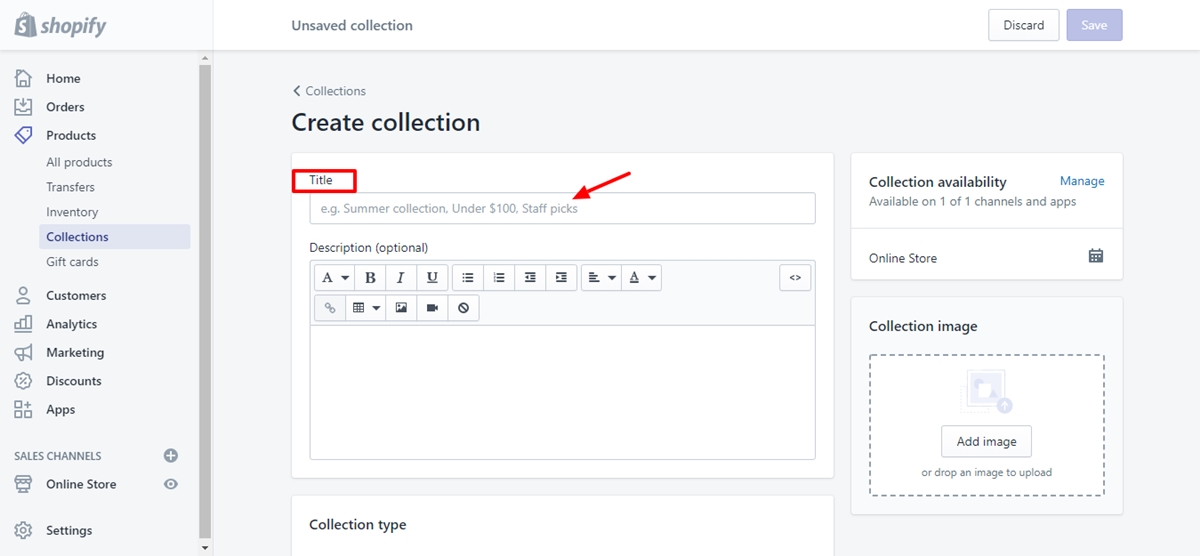
To finish name the Collection title, the shop owners can click to the Save button on the top right.
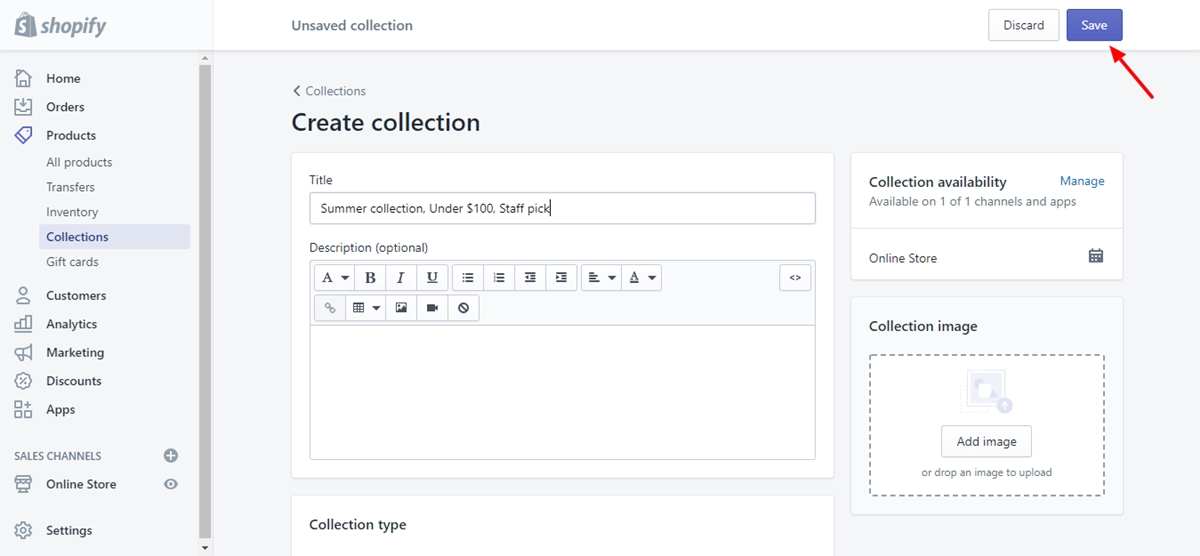
Description
Although adding a description is optional when you create a collection. However, the description will be an effective tool to increase and SEO for any online shops. By introducing customers to the collection with their relevant functionalities, it is easy fo Shopify store owners to attract more customers coming to their collection page.
Collection Description which can include sets of the meta description appears below the title in search results. If the online sellers can add more and various text in the description, it can help them broaden the scope of the queries page. In results, it could increase the rank in search results as well as Google.
Under the Title box, there is a Description box which allows the users to describe their collections easily with multiple functionalities such as Formatting with different headings, Bold, Underline, etc.
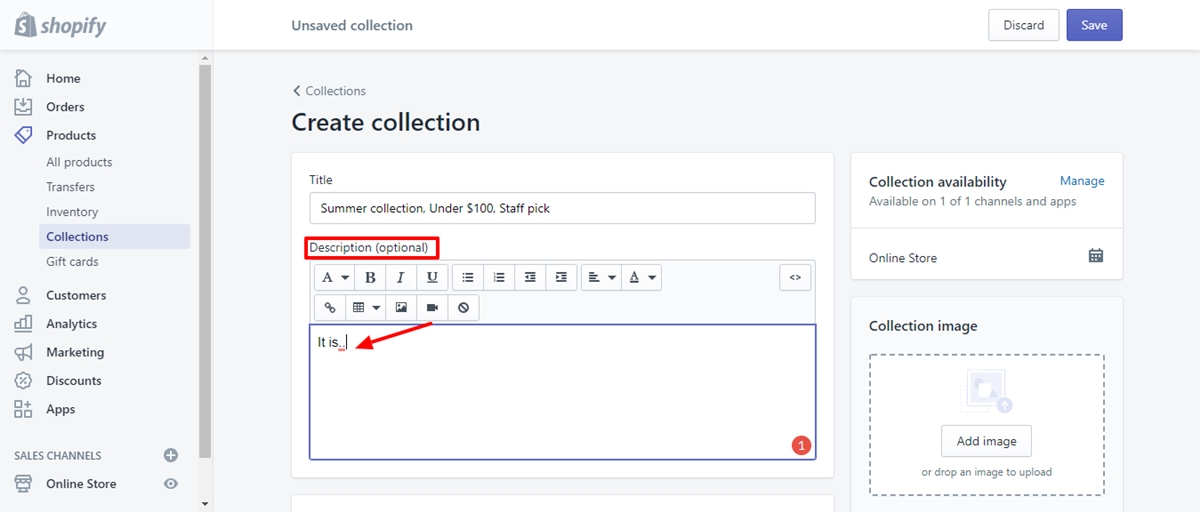
Click Save to finish the process to add the description.
Website SEO
After setting up the Title as well as Description, the Shopify store owners can easily edit them by scrolling down to the Search engine listing previewsection.
On the Collection page, online sellers choose to Edit website SEO. By clicking to that button, Shopify store owners can edit the title tag and meta description separately without influencing their displays on the page.
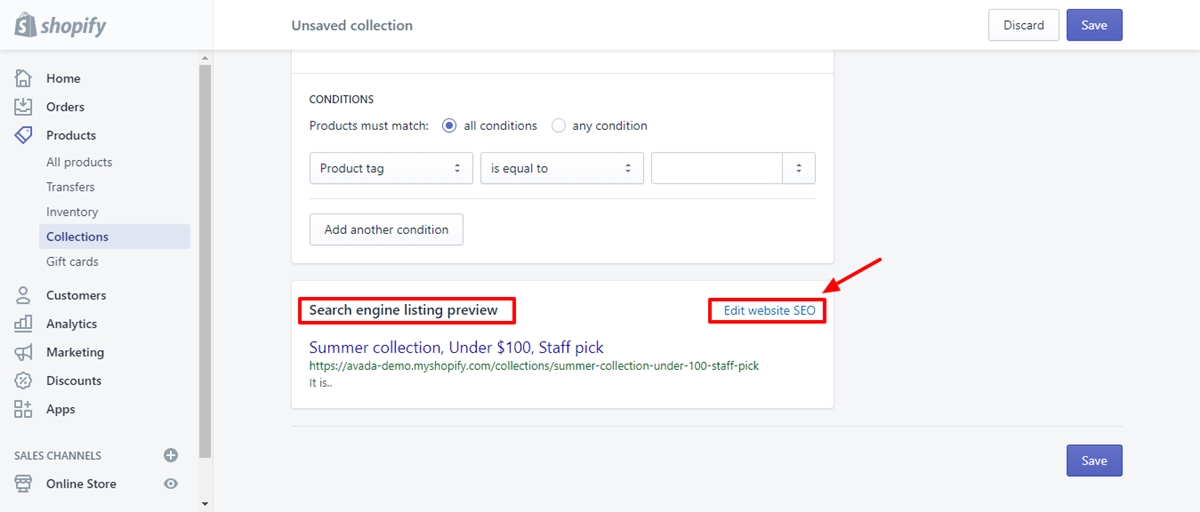
Since there is a limitation in the number of characters on the Page title is 70 while they can add 320 characters in the Description area. It is necessary for the users to optimize all of them to attract more customers via the search results page.
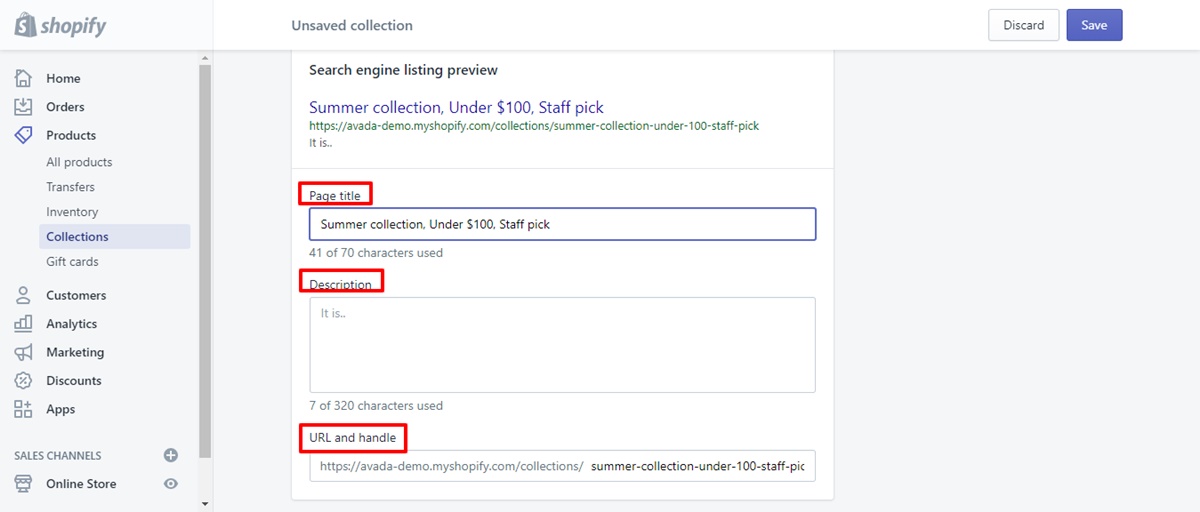
The URL will appear as a short greeting version of the title for the computer to understand. It should appear with the keyword identity.
Collection Type
There are two main types of collection that the Shopify store owners to choose from Collection type section.
- Automated collection type: Existing and future products that match the conditions you set will automatically be added to this collection.
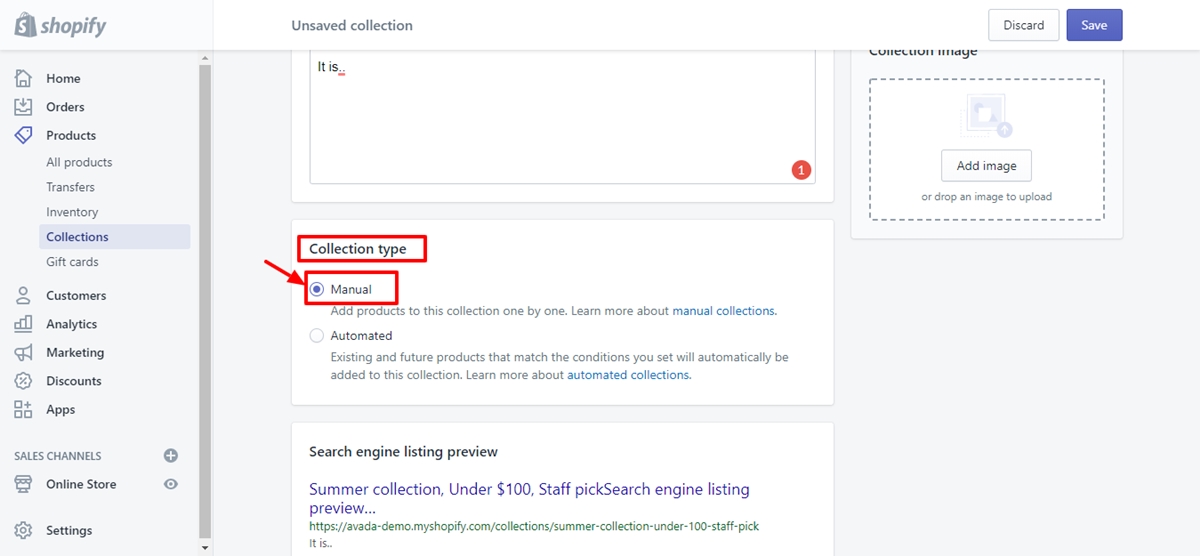
Shopify store owners can add more conditions about the product attributes such as the title, type, vendor, price, tag, price, weight, in or out of stock, etc.
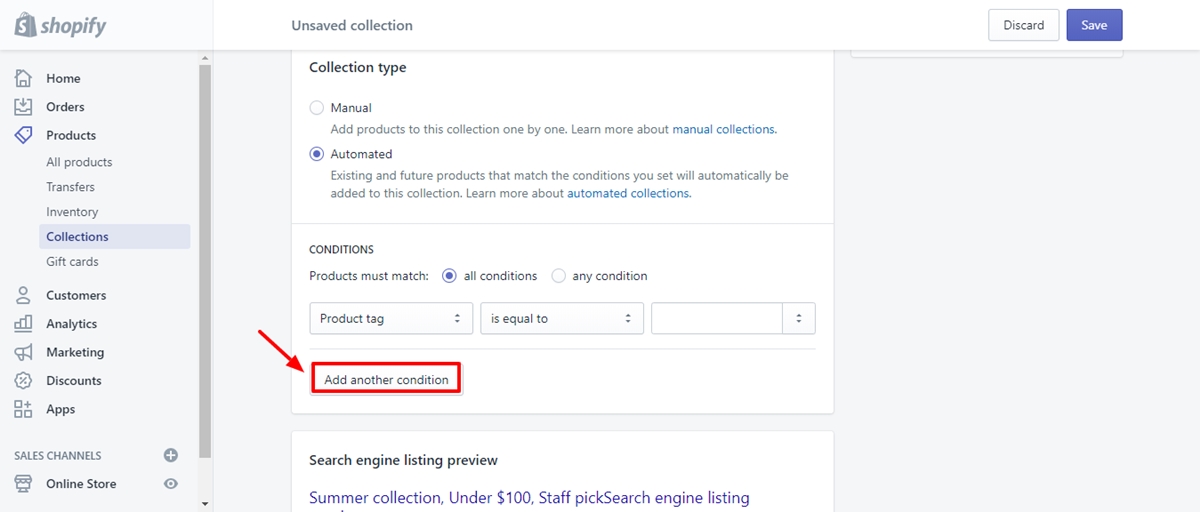
- Manual collection type:
The collection contains the same products. The products can just be added or removed by the users.
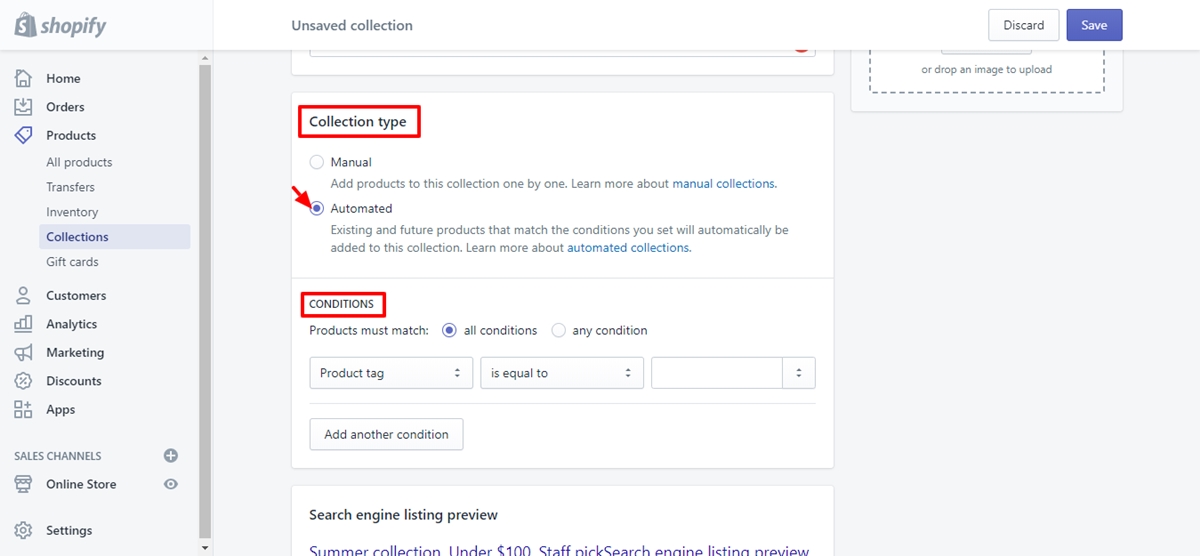
It is easy for online merchants to choose one of them under the Title and Description section. Each of them has its own advantages. But we recommend that you should choose the manual collections instead of using automated collections.
-
Ensure that add the products are added to manual collections are easier than ensuring to add a product tags or other attributes to a collection with conditions.
-
Condition-based collection selection can add products to multiple collections, creating potential duplicate content and other technical SEO issues.
-
Automated collections are rarely used unless there has been poor site-structure planning. Clear product categories are good for both navigation and SEO. Categories will be defined by whether or not a word turns up in a product tile, for example, are sloppy and error-prone.
In general, automated collections offer has no benefit and all risks when it comes to both SEO and ease of navigation.
Publish and make collection visible
Once you’ve set relevant field of your Shopify Collection’s settings, don’t forget to click on the Save button at the top of the page:
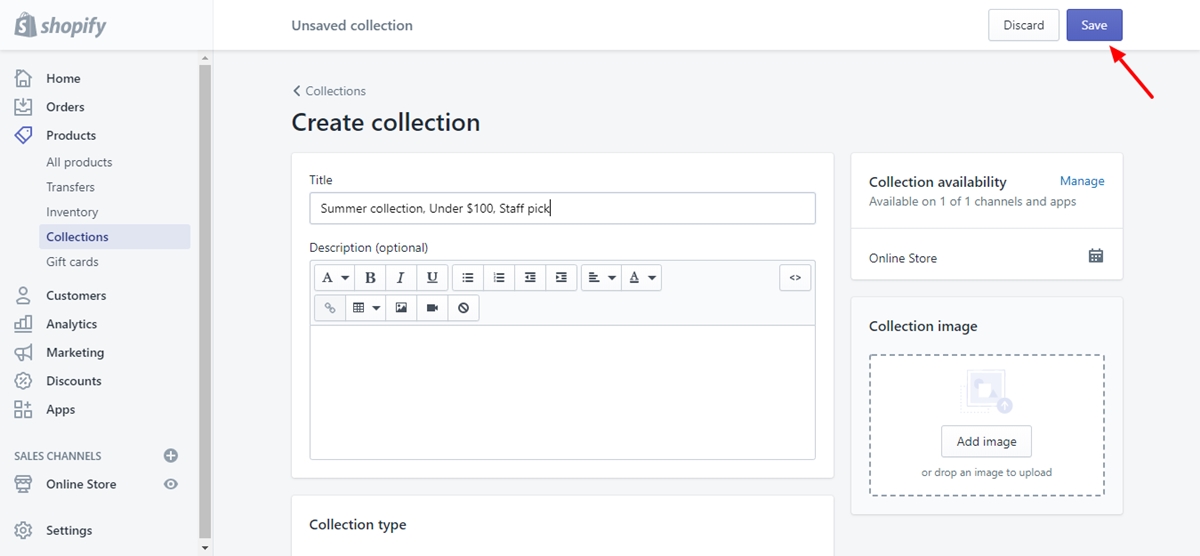
To publish your collection, open the Sales channels section at the top right of the collection creation screen and then click the calendar icon: Select the time and date that you want the Collection to publish from the popup calendar, then click the Save button again.
Add Your Collection To The Menu
In order for users to find your collection, and search engines to index it and send SEO authority its way, you will need to add your collection to the menu.
From the left navigation, choose Online Store and then click the Navigation link:
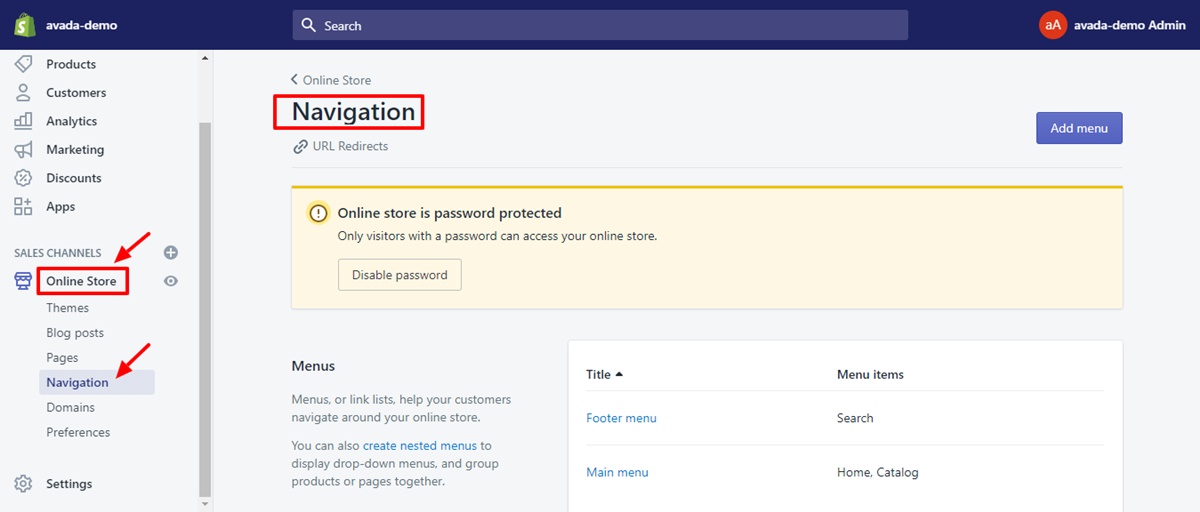
Click the menu that you want to add the Collection to.
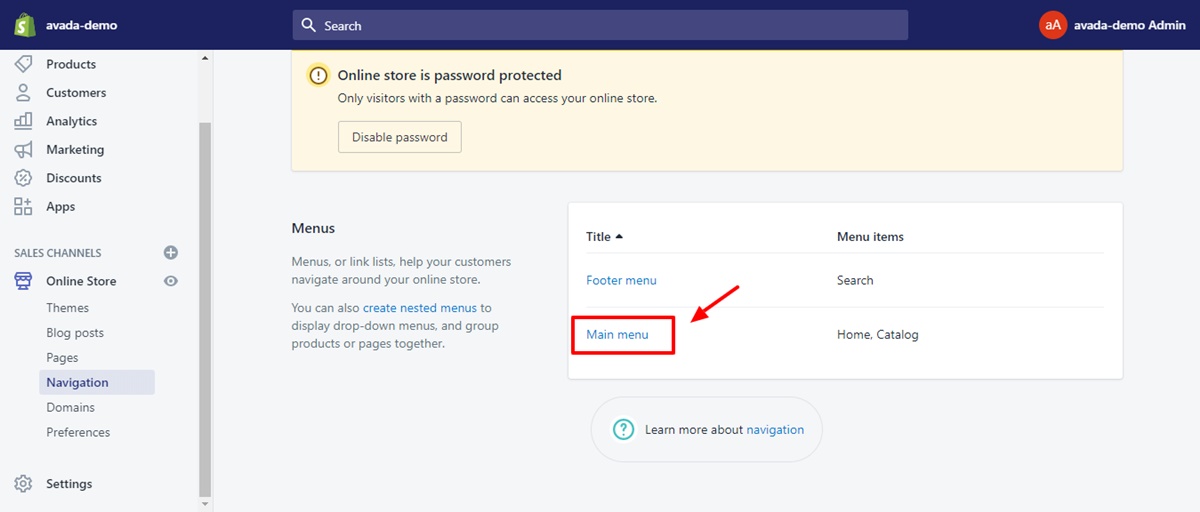
Scroll down to the Menu items section and click Add menu item: https://cdn4.avada.io/media/shopify/NMTtrNe.jpg
From the Add menu item pop up, Shopify store owners choose to Link field or type the name of their Collection. Another option is browsing the name from the popup menu. Then, they can click on that collection. Adding a collection is not difficult. But if you can not find it on the menu, they could have not been published yet or set to publish in later dates.
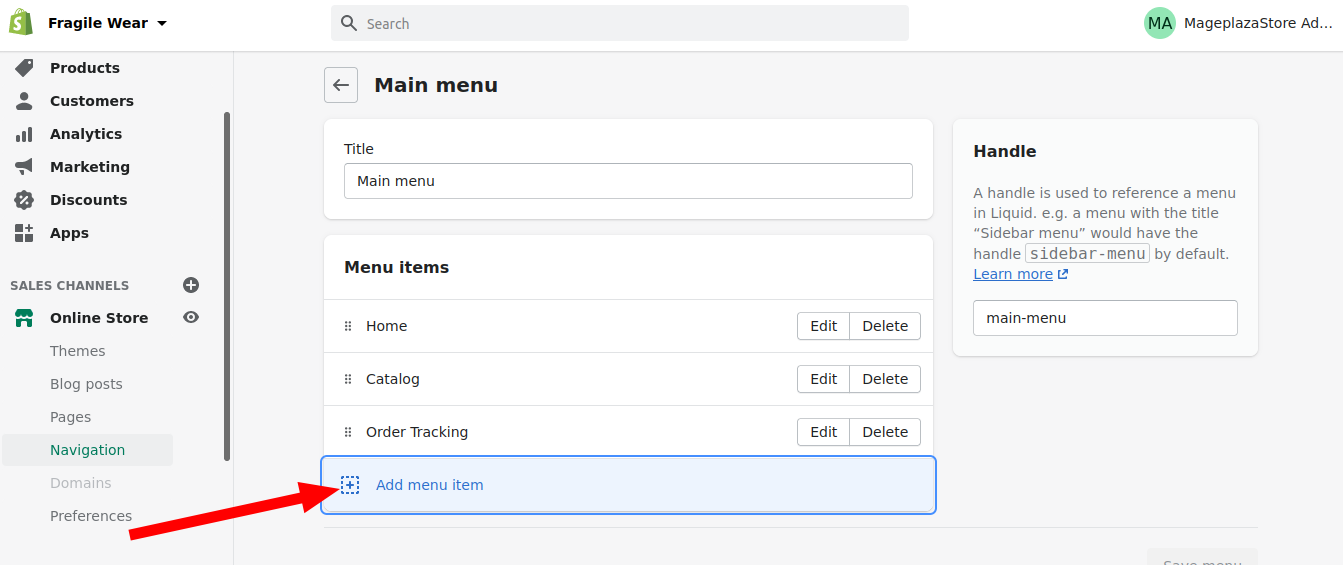
After choosing your collection, the name of your collection will be added to the Name field in the popup. The Name field sets the “anchor text” for the link which will appear in your menu as the clickable text.
You may need to shorten the name setting to make your menu look less cluttered and to reduce keyword repetition in the menu. Once you’ve done that, click Add:
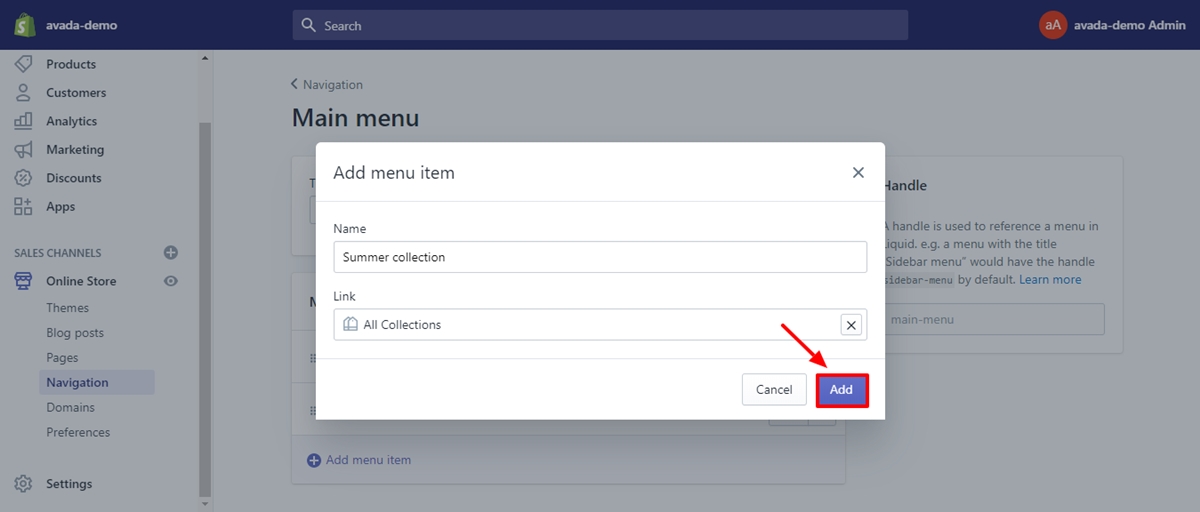
Optimize collection’s Image
You can also add an image to your collection. It depends on your theme, but this will be used typically to create a banner or “hero” image at the top of the collection page.
The Collection image section is on the right-hand side of the collection creation page. You can choose to drag and drop an image here, or click the Add image button and select an image from your computer.
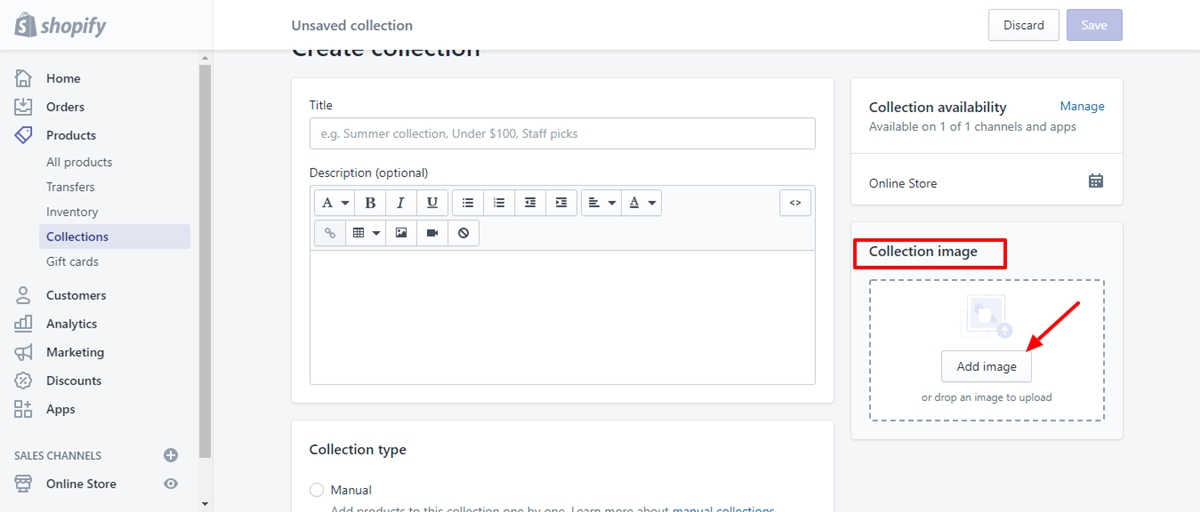
Click Edit image alt text. The image alt is an HTML tag that act as replacement text for the image in case the browser can’t load it, the user is visually impaired, or the image isn’t visible. Besides, it is also used by search engines to understand what the image is, making it easier for your image to turn up in relevant image searches.
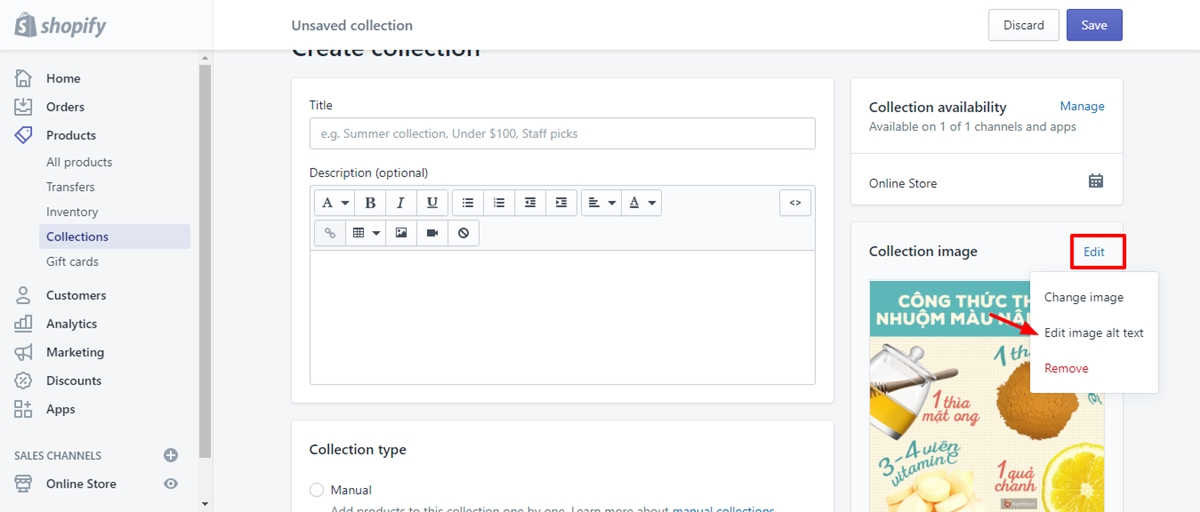
In the field Image alt text, enter a brief description of the image . This text should act as a replacement for the image and also make sense to users as well as search engines. Do include relevant keywords that describe the image, but in a way that is user-friendly. Click Save when you are done.
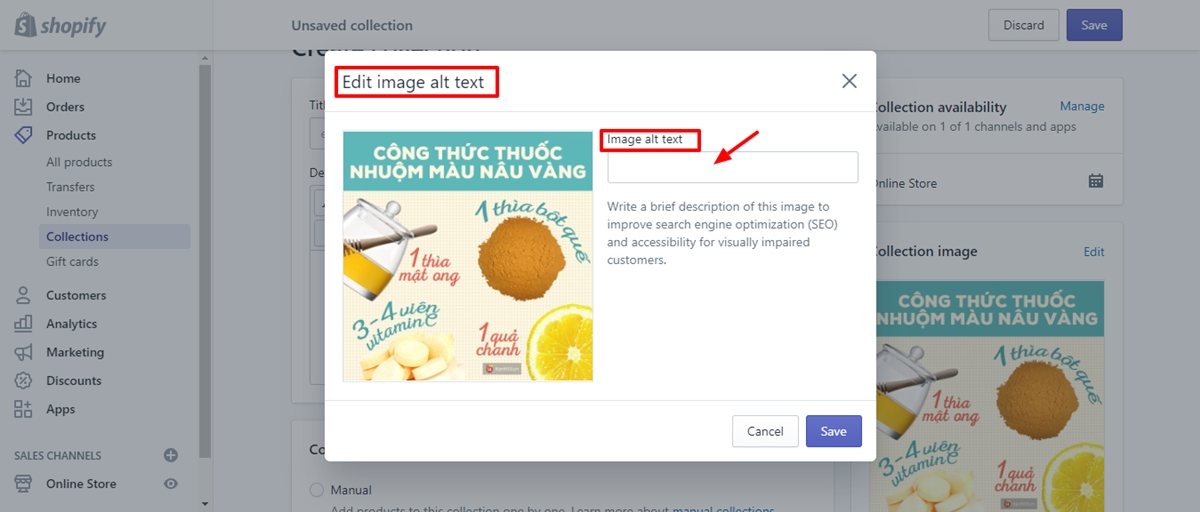
Building more collection pages for longer-tail terms
Besides optimizing a general product page, Shopify store owners also should not blank their specific collection page because it is perfect in parametric navigations. By creating more collection pages, online retailers enable catching this opportunity to increase their sales with body keywords.
There are many customizable collection pages that the store owners can build. Almost all the time, the collection pages are running on templates over a database. Moreover, the online sellers enable getting video into their templates to pull from database fields. The implementations on the CMS or catalog manager will be ready for online merchants. Another choice for Shopify store owners is using vendors to help them build their products in a quick and available template.
For example, these vendors such as TurnTo Networks and Bazaarvoice, which help the users to can add SEO friendly content easily. Or Bloomreach which is considered as a vendor company focuses on creating SEO categories. On these platforms, it is easy for online sellers to customize their categories based on popular keywords. The new internal links to point these numbers of new collections through some crafty implementations.
In addition, online merchants can create SEO collection page or the sub-category page without a vendor. When the Shopify store owners want to create a powerful SEO collection page, they even need years to show their point clearly. In addition, there are some ecommerce platforms that do not allow users to generate their pages. The problems that the store owners can face up with is these UX that they do not want to display on the main navigation.
Adding SEO Data to Collection Pages
Today with the development of Shopify marketplaces, the size of the business will grow dramatically. Because of the high volume in the number of visitors as well as customers, the number of collections and products also increases. However, it is not easy for Shopify store owners to SEO all these pages because each collection and product has its own SEO criteria. To create their own uniqueness on the defaults search engine, it is essential for the Shopify store owners to improve on their presence in the store.
Ther information of SEO Data can be varied with both collection and product level, let’s read below passages to know more about these levels.
Collection SEO
- Step 1: Go to Product
From the Shopify admin page, select the menu option Products
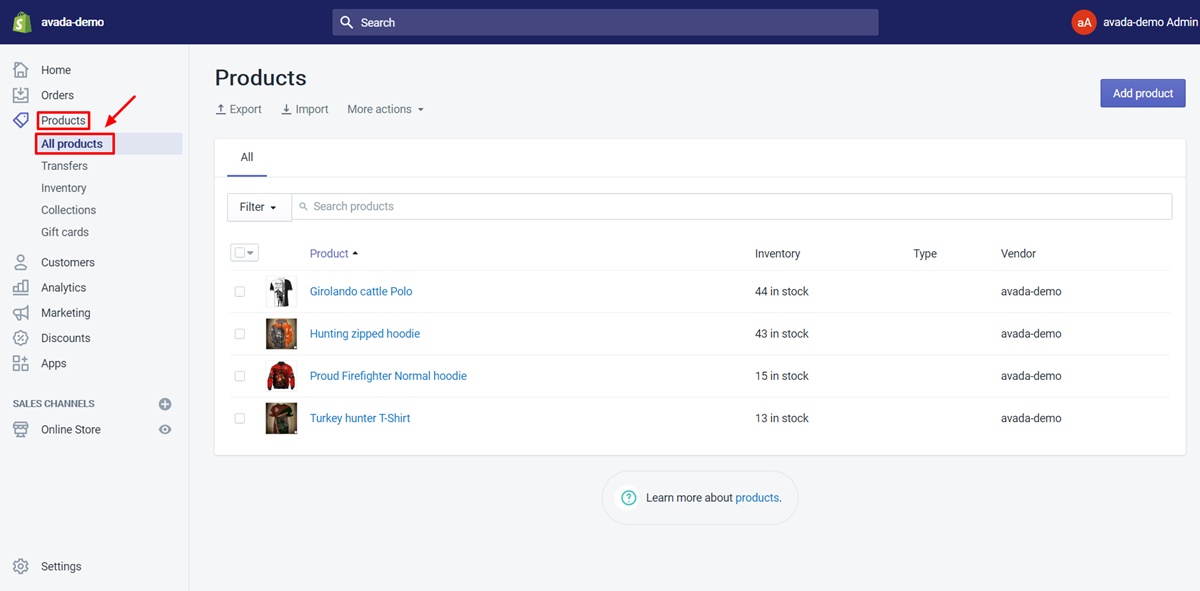
- Step 2: Choose
Collections
Then select the Collections on the menu of Product section.
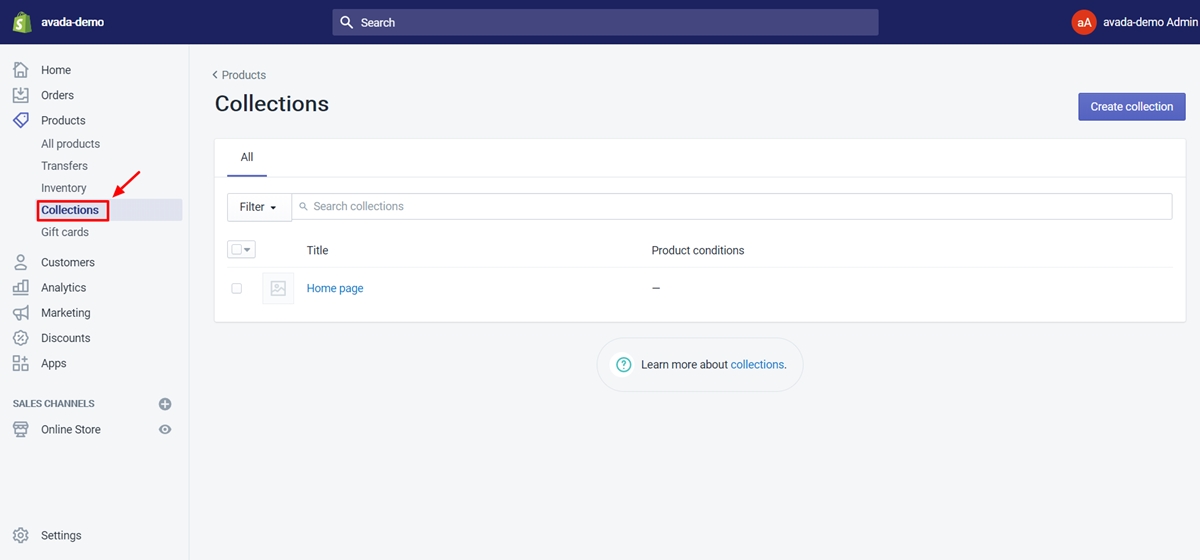
- Step 3: Edit website SEO
On the list of collections appear, click to the title of a collection that you want to add SEO.
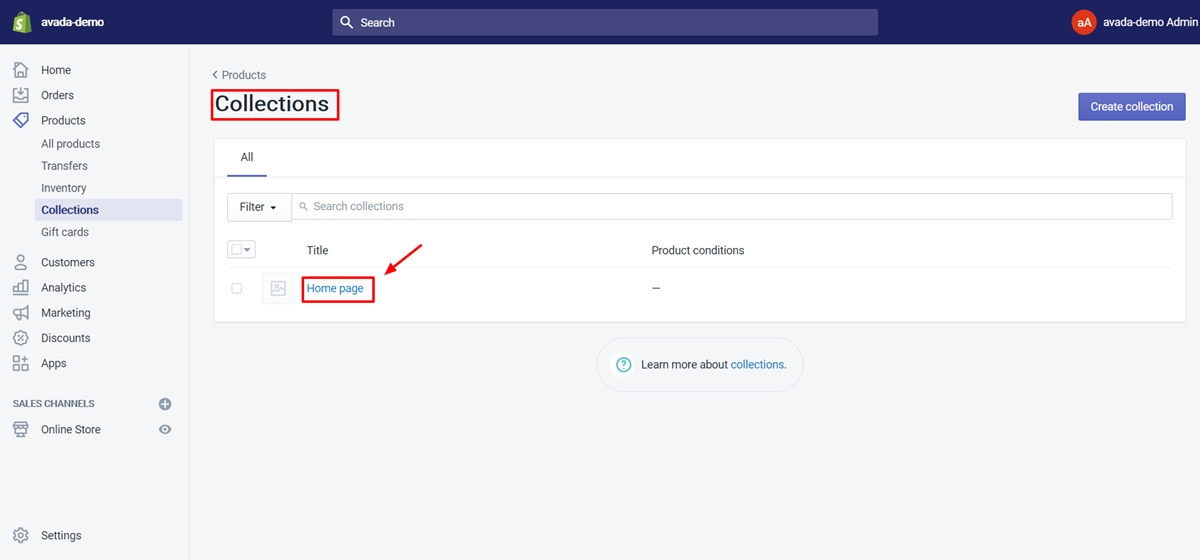
At the bottom of the page in the Search engine listing preview section, click on the link Edit website SEO.

- Step 4: Edit SEO fields
At this step, the section will be expanded to include SEO fields such as Page title, Description, URL and handle
On the Page title section, the number of characters is limited by 70, so the ideal title should be between 55 and 65 characters. If the number of characters is above 70, the counts will be negative and the display in the search engine will be truncated. Because of this importance of this title, Shopify store owners need to include all the important keywords in this area.
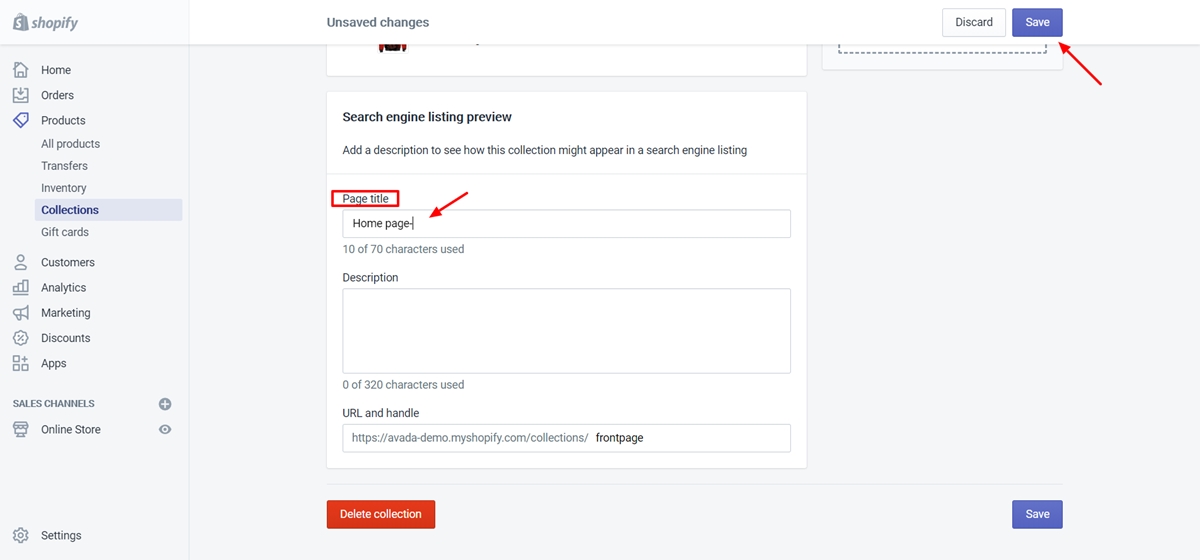
- Step 5: Click
Save
Click on the Save button to confirm the changes.
Product SEO
For different categories, each of the products on the site can be optimized easily for search engines.
- Step 1: Go to Product
On the Shopify admin page, store owners can choose the ` Products` in the left side menu.

- Step 2: Choose
Collections
Then select the Collections on the menu of Product section.

- Step 3: Edit website SEO
On the list of collections appear, click to the title of a collection that you want to add SEO.

At the bottom of the page in the Search engine listing preview section, click on the link Edit website SEO.

- Step 4: Edit SEO fields
The Description is usually blank, but it is not suggested because it also helps the online merchants to boost the rankings effectively. On the Description section, the maximum amount of letters is 320 characters. The collection will be described with multiple keywords and tags will appear on the top of Google when the customers search about the keywords. Moreover, with pertinent information, it is easy for online merchants to reach buyers in search engines.
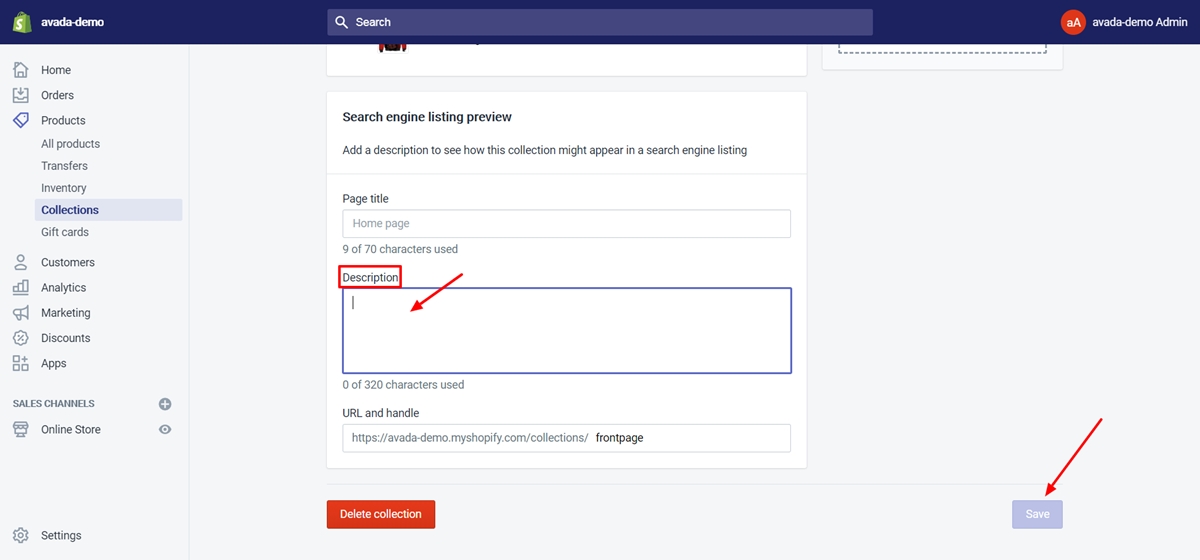
- Step 5: Click
Save
Click on the Save button to confirm the changes.
Free 1:1 Shopify consultation & 30-day all-app trial FREE
- Shopify Plus Strategy and Consultation
- Personalized E-commerce Solutions
- Conversion Rate Boosting Techniques
- Inventory Management Hacks
Conclusion
Search engines of Google every day have millions of users per day who are looking for their products. That is a valuable opportunity for your online shops to boost your business. Because SEO is an important tool for any eCommerce site, the Shopify store owners need to concern more and more in the competitive market. Besides, the online sellers need to concern more about designing, collection pages also need to be invested more based on the client’s goals.
I hope this Shopify How To Seo Collections article will become helpful for you. If you have any questions related to this topic, feel free to leave a comment below.
Related Posts:
New Posts







